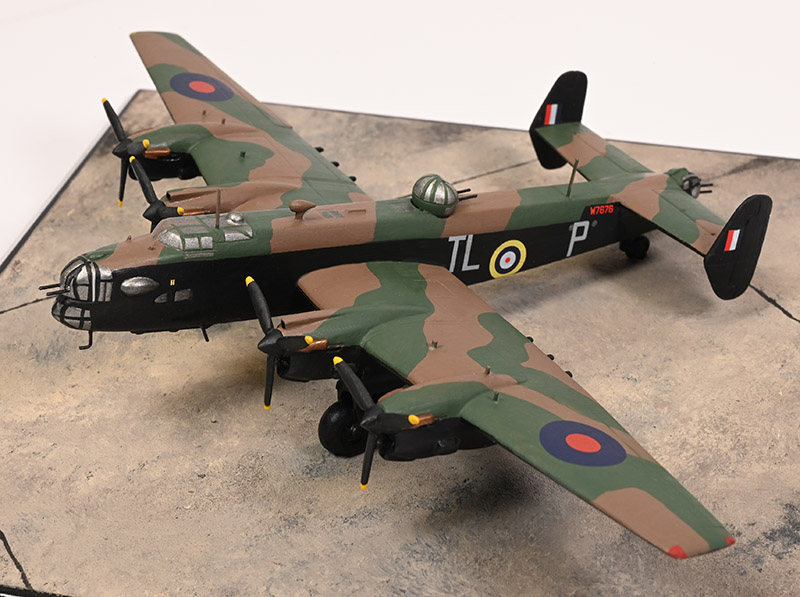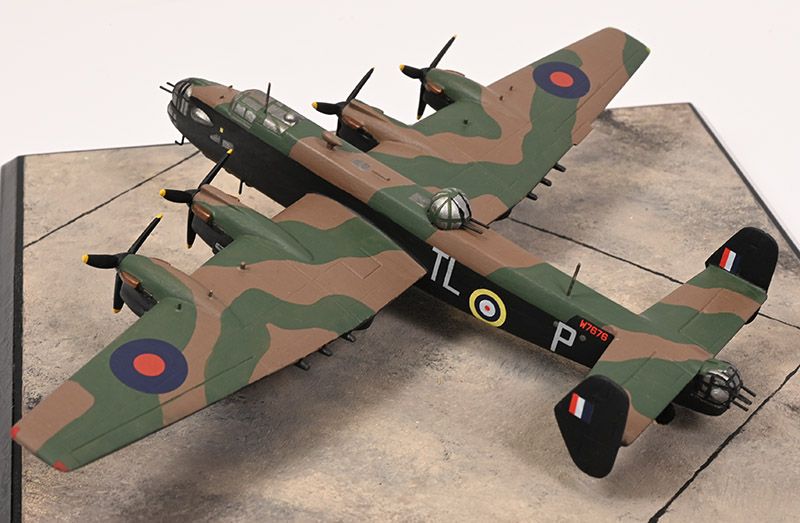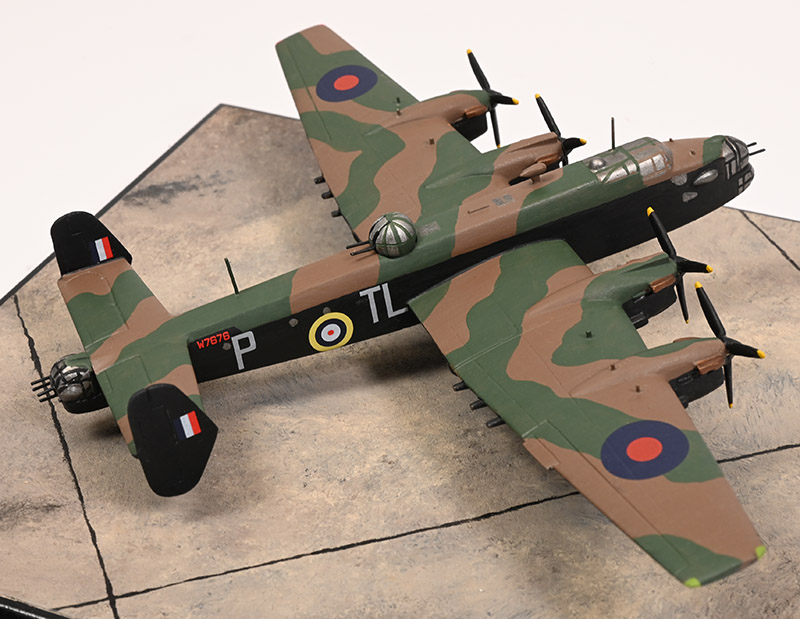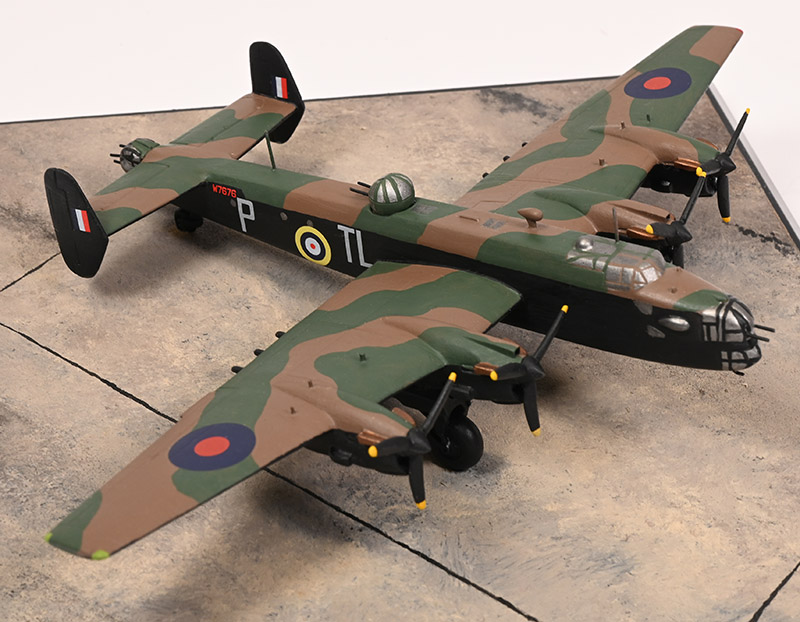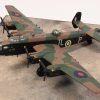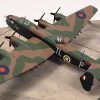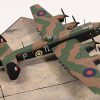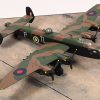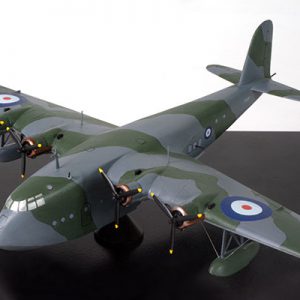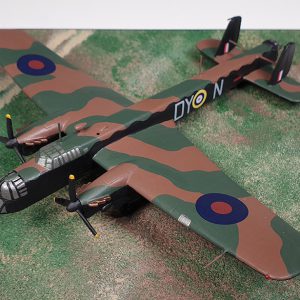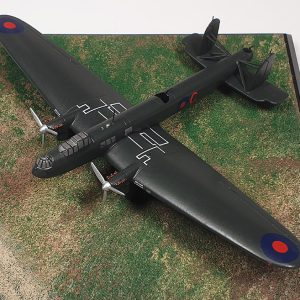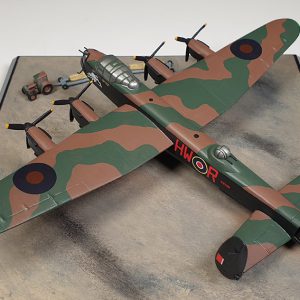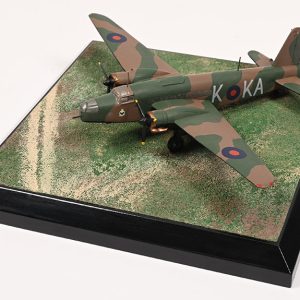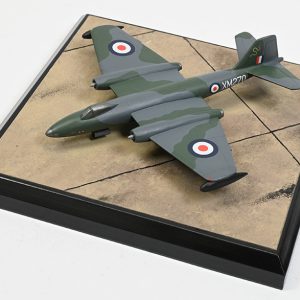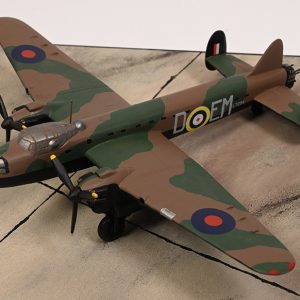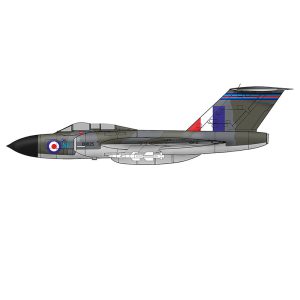Handley Page Halifax Mark II Series I, W7676, TL-P
35 (Madras Presidency) Squadron, Flight Lieutenant Reginald Lane, Linton-on-Ouse, England, Summer 1942
The Halifax shared with the Lancaster the major burden of Bomber Command’s night bombing campaign against Nazi Germany but unlike the Lancaster, which only served as a bomber during the war, the Halifax was used extensively on other duties including glider-tug, agent dropping transport and general reconnaissance aircraft in Coastal Command. Due to mounting losses on Bomber Command operations over Germany in 1942-43, Halifax bombers were restricted to supposedly less hazardous targets from September 1943 onwards. However, between 1941 and 1945 the Halifax made over 75,000 bombing sorties and dropped 227,610 tons (231,300 tonnes) of bombs; more than a quarter of all bombs dropped on Germany by the RAF. The Halifax was in the process of being replaced as a front line bomber in 1945 but it continued in service with Coastal and Transport Commands after the war. The last operational flight was made by a Coastal Command Halifax in March 1952 while operating from Gibraltar.
The Halifax has its origins in the twin-engine HP56 proposal of the late 1930s, produced in response to the British Air Ministry’s Specification P.13/36 for a capable medium bomber for “world-wide use.” The HP56 was ordered as a backup to the Avro 679, both aircraft being designed to use the underperforming Rolls-Royce Vulture engine. The Handley Page design was altered at the Ministry to a four-engine arrangement powered by the Rolls-Royce Merlin engine; the rival Avro 679 was produced as the twin-engine Avro Manchester which, while regarded as unsuccessful mainly due to the Vulture engine, was a direct predecessor of the famed Avro Lancaster.
The main change made to the Mk II Halifax was the use of the 1,280 hp Merlin XX engine, giving a significant performance boost over the Mk I. Amongst the improvements was a 3,000 feet increase in the service ceiling, bringing it up to 21,000 feet. The majority of Mk II Series I aircraft also had a new dorsal turret, the Boulton Paul C, in place of the beam guns that were carried on the Mk I. The Mk II entered service in October 1941.
35 Squadron went through two incarnations during the Second World War. At the start of the war it was equipped with the Fairey Battle, but unlike most Battle units was not sent to France, instead acting as a training unit, equipped with a mix of Battles, Ansons and Blenheims. On 5th November 1940 the squadron reformed at RAF Boscombe Down as the first Halifax bomber unit. A detachment from the squadron had been training on the prototype Halifaxes, and began to work with the first production aircraft in November 1940. The squadron introduced the type into operational service with a night raid on 10th March 1941 against Le Havre. It was also involved in two unsuccessful attacks on the German battleship Tirpitz lying in Trondheim Fjord in April 1942. The squadron transferred from main bomber force to the Pathfinder Force in August 1942. The unit converted to Lancasters in March 1944.
W7676 ‘TL-P’, was flown by Flight Lieutenant Lane and his crew on twelve operations. The aircraft failed to return from a raid on Nuremberg on the night of 28/29th August 1942, when flown by Flight Sergeant John and his crew. Outward-bound, the aircraft was hit by Flak and crashed into the Westerschelde with loss of all seven crew. W7676 wears standard Bomber Command camouflage of Dark Green/Dark Earth in an A scheme pattern, with black undersides. Halifax W7676 was photographed in the air in one of the most famous colour photographs of a Halifax taken during the War.


